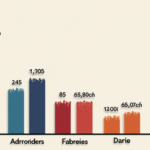Background on US-Mexico Tensions
Donald Trump’s recent letter to Mexican President Claudia Sheinbaum exemplifies an enduring American tradition: employing political, military, or commercial threats to engage with other nations. Trump has merely refined this approach.
Historical Context
- In 1825, envoy Poinsett pressured Mexico to sell Texas to the US.
- In 1846, President Polk accused Mexico of aggression to justify an invasion that resulted in the loss of half of Mexico’s territory.
- In 1913, ambassador H.L. Wilson supported the overthrow of President Madero.
- In 1914, President Wilson occupied Veracruz to demand Huerta’s resignation.
- In 1985, Reagan pressured the Mexican government over the assassination of a DEA agent.
Today, Trump blames Mexico for the fentanyl trade and claims insufficient action against drug cartels. His letter acknowledges some progress but deems it “insufficient.”
Impact of the 30% Tariff
The 30% tariff is not merely a trade adjustment; it’s a blow that could cause up to a 1.4% decline in Mexico’s GDP, peso depreciation, and the loss of hundreds of thousands of formal jobs.
- Key Mexican export sectors affected: autos, steel, electronics, avocados, and fresh produce.
- Nearshoring, once celebrated, now seems distant.
Although some Mexican products may be exempt if they comply with T-MEC rules, many won’t due to foreign components.
US consumers will also bear the brunt of Trump’s decisions, paying between $2,200 and $2,600 more annually due to global tariff overcosts, including those on Mexico.
Sheinbaum’s Response and Future Actions
Despite maintaining composure in dealings with Trump and his public praise, President Sheinbaum has yet to secure any concrete benefits for Mexico. Even her anti-drug trafficking strategy, which has cost the country dearly, hasn’t slowed Trump.
Trump insists the tariff can be avoided if an agreement is reached by August 1st. However, the decision seems made. Mexico was notified during a Washington meeting where a bilateral permanent table was set, with Mexican representatives expressing disagreement and calling the treatment unjust.
Facing a lack of US commitment to suspend the measure, Mexico might explore targeted retaliatory tariffs on key US products for Trump—Iowa corn, Texas beef, or Wisconsin dairy—to generate domestic political pressure without excessively harming its own economy.
Given the current signals from Washington pointing towards imposition rather than genuine dialogue, Sheinbaum asserts a negotiation path remains open, though Trump has decided.
Mexico must respond firmly and intelligently, combining dialogue, selective pressure, and international support. Failure to do so will incur not just economic but also historical costs.
Key Questions and Answers
- What is the main issue? The 30% tariff threatens Mexico’s economy and bilateral relations.
- What historical context exists? The US has a history of using threats against Mexico, from the 1825 Texas annexation attempt to recent drug cartel pressure.
- How will the tariff impact Mexico? It could cause a 1.4% GDP decline, peso depreciation, and job losses in key export sectors.
- What is President Sheinbaum’s response? She aims to negotiate firmly and intelligently, combining dialogue, pressure, and international support.






